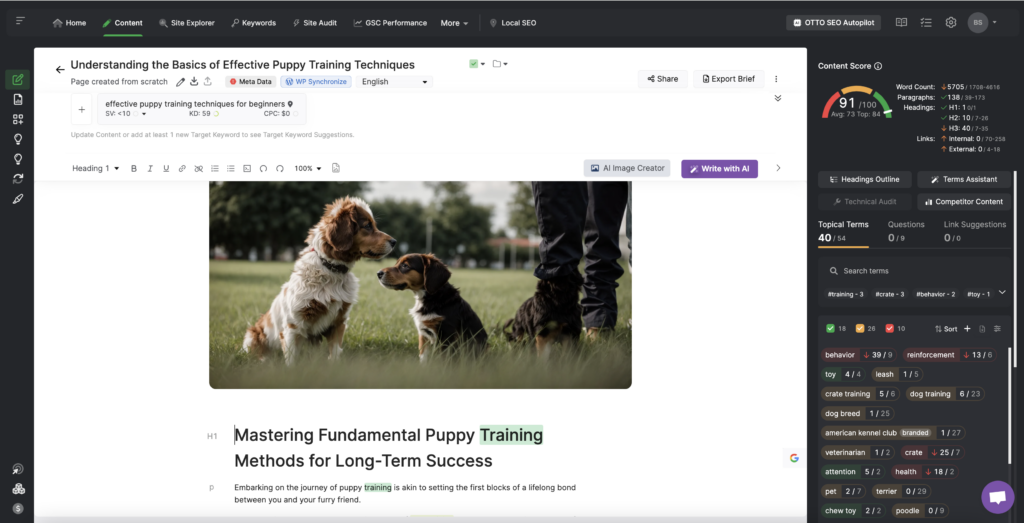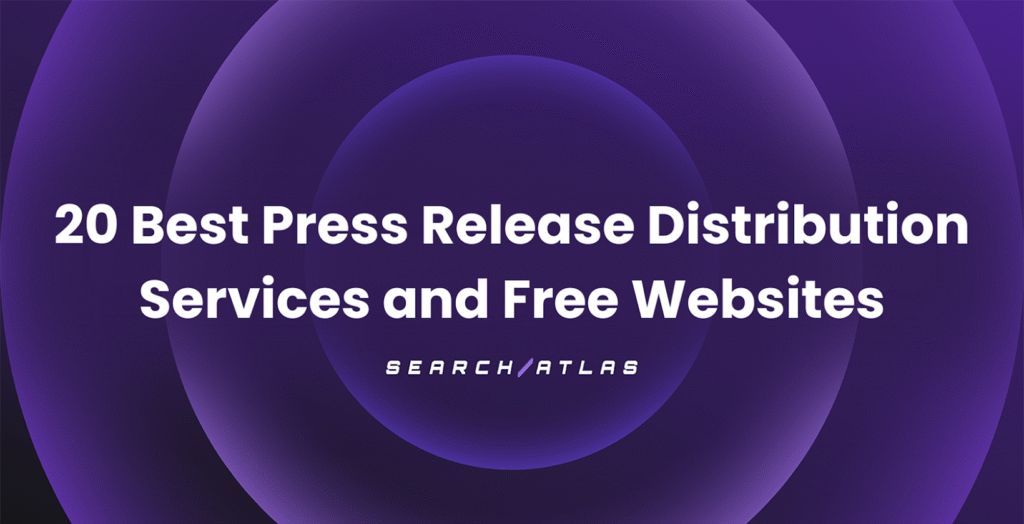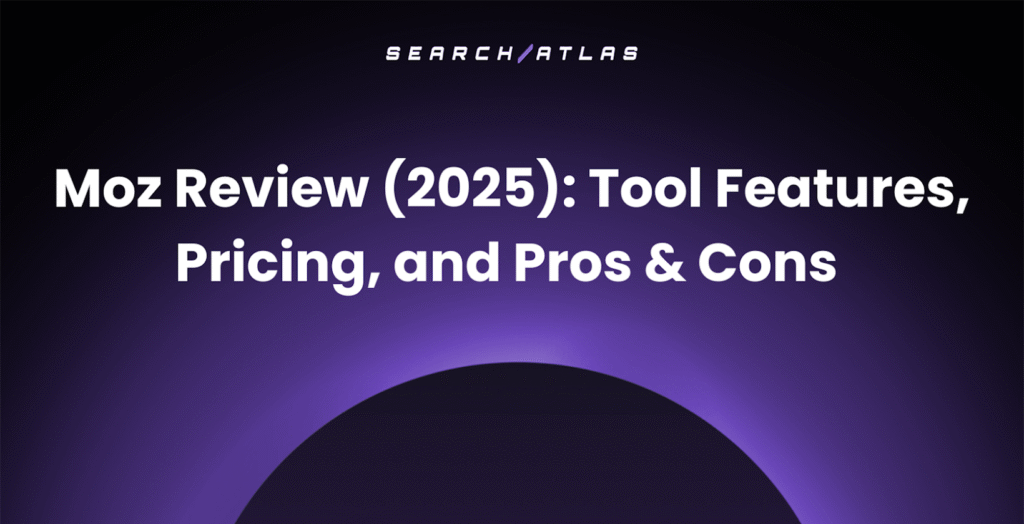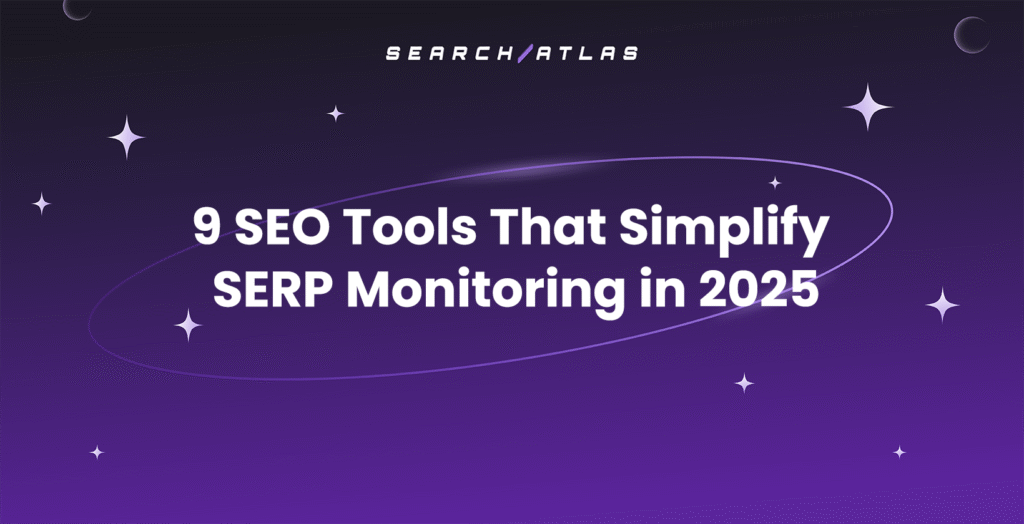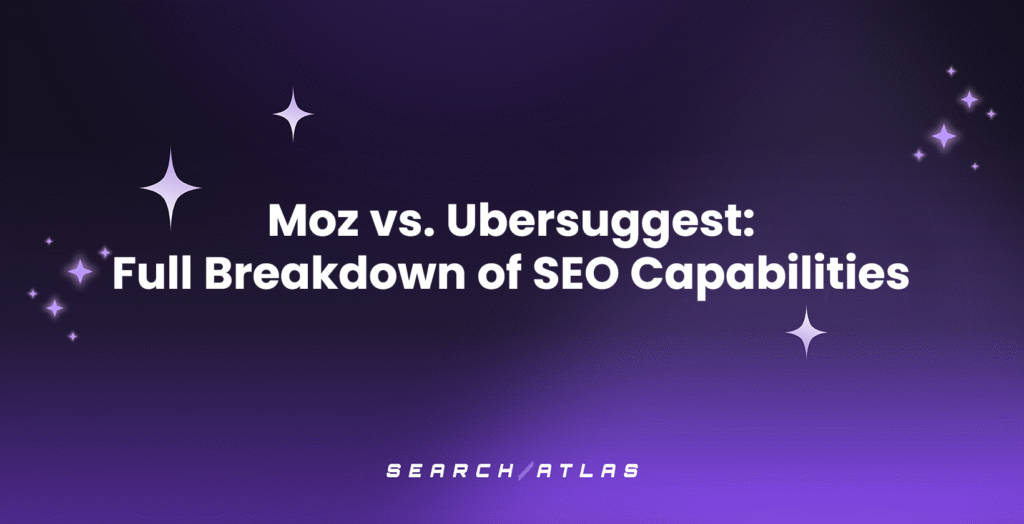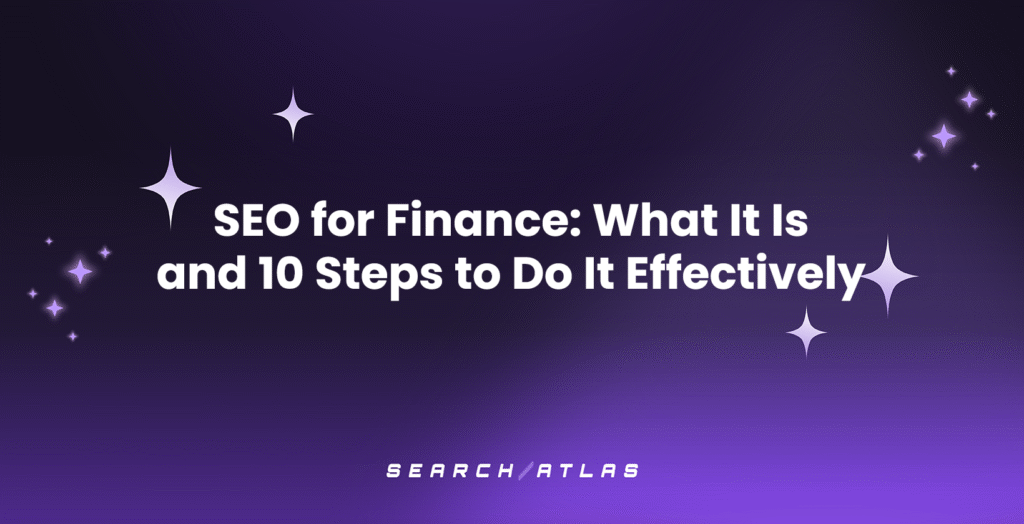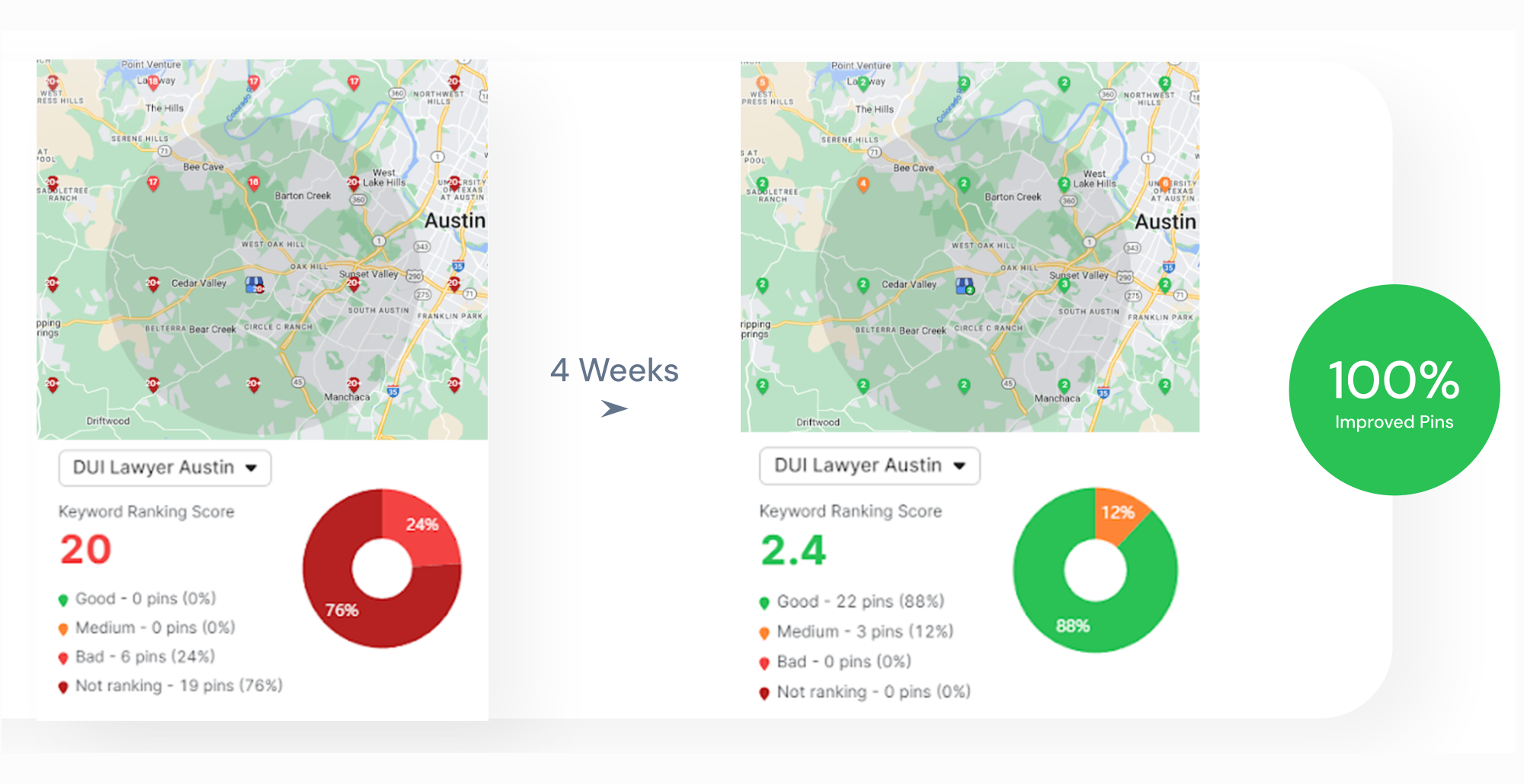Ever wonder how some businesses just nail their online presence with other businesses? It’s all about having a winning B2B content strategy. 🏆
Think of it like this: instead of trying to sell a cool gadget to an individual, you’re helping a company, like a local bakery, find the perfect oven supplier. Forget about flashy ads; you’re essentially crafting stories and optimizing content that connects with your ideal clients and helps them solve their biggest challenges.
Your content needs to resonate with the right people: the decision-makers at that bakery. A successful B2B content strategy deeply understands your audience and aligns perfectly with your business goals.
We’re going to dive deep into B2B content creation and the 13 most effective strategies to make it successful! Now, let’s uncover what goes on behind the scenes. 📽️
What Is B2B Content Marketing?
A B2B content strategy is a structured plan for creating, distributing, and optimizing content to attract and engage business clients. Unlike one-off blog posts or random social media updates, it’s a long-term approach designed to build trust, nurture leads, and align content with business goals.
The real difference is who you’re talking to. You’re not trying to reach just anyone; you’re aiming for the key people in a company, like the CEOs, the managers, and the teams making the big decisions about what to buy. 🧑💼
Because these decisions take time, your B2B content is like a friendly guide to your audience, walking potential clients through each step.
It’s about being a helpful resource, sharing your knowledge, addressing their specific industry headaches, and showing them you’re the expert they can rely on. For example, we wrote about the 5 critical AI SEO services leaders want in their agencies.

Why Is Content Marketing Important for B2B Companies?
Content marketing is one of the best ways for B2B companies to bring in visitors, find new leads, and, yes, make more money.
According to DemandSage, content marketing really works. In fact, over half of B2B marketers (58%, to be exact) saw a direct jump in sales thanks to their content efforts in 2023. And get this: that same research showed that content marketing brings in 3X more leads than traditional outbound marketing, all while costing 62% less!
It’s a win-win. 👑
Why? Because great content builds trust. When businesses consistently create valuable resources, whether it’s insightful guides, case studies, or industry reports, they position themselves as the go-to experts.
And when potential clients trust you, they’re far more likely to buy from you.
When done right, a B2B content strategy can unlock incredible results:
- Increase website traffic by earning high rankings on search engines.
- Generate quality leads by attracting businesses actively searching for solutions.
- Strengthen credibility by showcasing expertise through thought leadership.
- Drive conversions by educating prospects at every stage of the buying process.
- Reduce marketing costs since content can keep delivering value for months or even years.
How Are B2B Content and B2C Content Different?
If we want to nail B2B content, we need to understand how it’s different from B2C. So, let’s break it down and fine-tune our approach to writing for a B2B audience.
Audiences
B2C content targets a broad audience, but B2B content must speak directly to key decision-makers within companies.
For example, Asana tailors its content for team leads and executives, not just anyone. But different from B2C, the goal isn’t just capturing attention; it’s providing value, increasing engagement, and guiding stakeholders toward a purchase.
Distribution Channels
B2C content thrives on social media, ads, and viral reach, like Instagram, TikTok, and influencer partnerships. These are channels for quick engagement and impulse buys. 🛍️
B2B content, on the other hand, needs a more strategic approach. It performs best on LinkedIn, industry blogs, email newsletters, and webinars. These are the places where decision-makers seek insights before making big purchases.
B2B channels nurture trust over time, guiding leads through a longer sales cycle.
Content Types
B2C content is more about quick engagement. Some examples are social media posts, short videos, or promotional emails designed for instant impact.
B2B content, on the other hand, leans on in-depth formats like whitepapers, case studies, webinars, and eBooks. 📖
For example, a cloud storage provider might create a case study showing how they helped a law firm securely manage sensitive data, while a fintech company could host a webinar on compliance trends for CFOs.
While both aim to influence decisions, B2B content supports a longer, research-driven buying process where credibility is everything.
Relationship Building
B2C relationships are like a quick coffee run. ☕
You see something you need, grab it, and move on. If a skincare brand promises to clear up acne fast, that’s all a customer needs to hit “buy.” Sure, they might stick around if the product works, but the connection is mostly about solving an immediate problem.
B2B is more like a long-term partnership. 🤝
Let’s say you’re selling workflow automation software. You’re not just convincing one person, you’re winning over managers, IT teams, and executives, each with their own priorities.
10 Most Effective Strategies for B2B Content Marketing
Creating great B2B content requires proving you know your stuff and truly understand your audience’s needs.
But keep calm; we’ve got you covered. We’re going to walk you through the 13 most effective steps for B2B content success in a way that’s clear, practical, and easy to follow.
Let’s do this!
1. Understand Your Audience to Speak Directly to Their Needs
To create content that truly connects, you need to understand your audience inside and out. That means figuring out their biggest challenges, questions, and goals so you can speak directly to what matters most to them.
Start by listening where they already talk. Use a blog idea generator, read industry forums, LinkedIn discussions, or comments on relevant videos and articles. What questions keep popping up? What frustrations do they share?
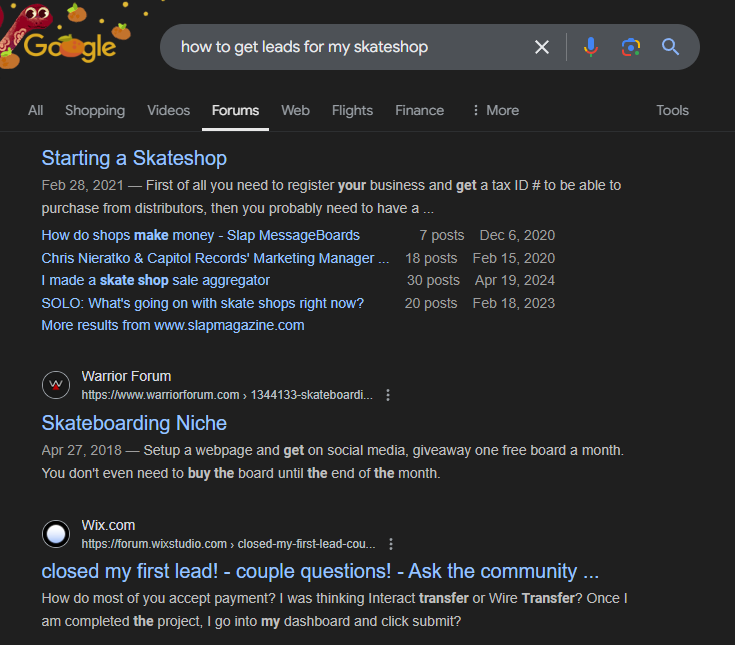
Customer reviews are another goldmine. See what people love (or hate) about competitor products; those insights can guide your messaging.
If you have an existing audience, engage them directly. Run surveys, hop on quick calls, or even offer small incentives to gather real feedback. The better you understand their pain points and needs, the more valuable and effective your content will be.
2. Match Content Formats to the Right Channels for Impact
For B2B content marketing to work, it’s not just about creating great content, you have to put it in the right places. Different formats work best on different channels, and matching them correctly makes all the difference.
Start by thinking about how your audience prefers to consume information.
Are they searching Google for in-depth guides? Watching videos for step-by-step instructions? Reading case studies to make data-driven decisions?
Choosing the right format for the right channel ensures your content reaches the right people in the right way.
Here are some of the most effective content formats and how they work for B2B marketing:
- Blog posts and articles: Great for driving organic traffic, educating potential customers, and demonstrating expertise.
- Whitepapers and reports: Provide in-depth insights and research, making them valuable for lead generation.
- Case studies: Showcase real-world success stories to build credibility and show potential customers what’s possible.
- Webinars and video content: Help educate and engage your audience through interactive, visual content.
- Ebooks and guides: Offer comprehensive solutions to industry challenges and work well as lead magnets.
- Infographics: Simplify complex data and insights, making them easy to digest and share.
- Email newsletters: Keep your audience engaged by delivering valuable insights and company updates directly to their inboxes.
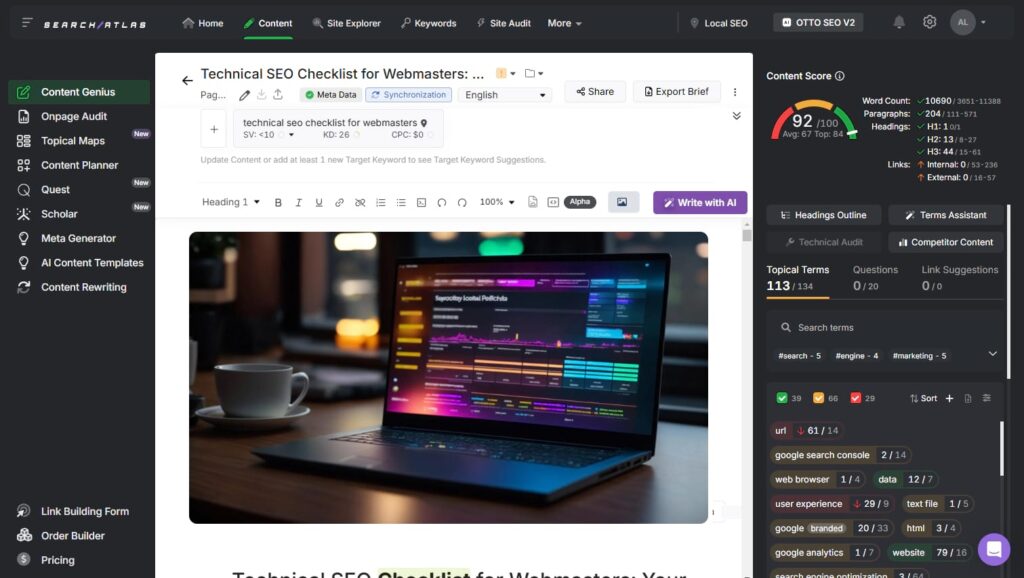
Once you have your formats, you need the right channels to distribute them:
- Organic search (SEO): Drives inbound traffic through blogs, reports, and guides.
- LinkedIn: The go-to platform for B2B professionals, perfect for sharing thought leadership, case studies, and industry insights.
- Email marketing: One of the most effective ways to nurture leads and stay top-of-mind with prospects.
- YouTube and webinars: Ideal for deep dives into complex topics and visual storytelling. In this case, you’ll also need to master keyword research for YouTube.
- Paid ads (Google Ads, LinkedIn Ads): Amplify high-value content such as whitepapers, case studies, or webinar sign-ups.
Use content templates, select the content format of choice, and generate the content with personalized AI.
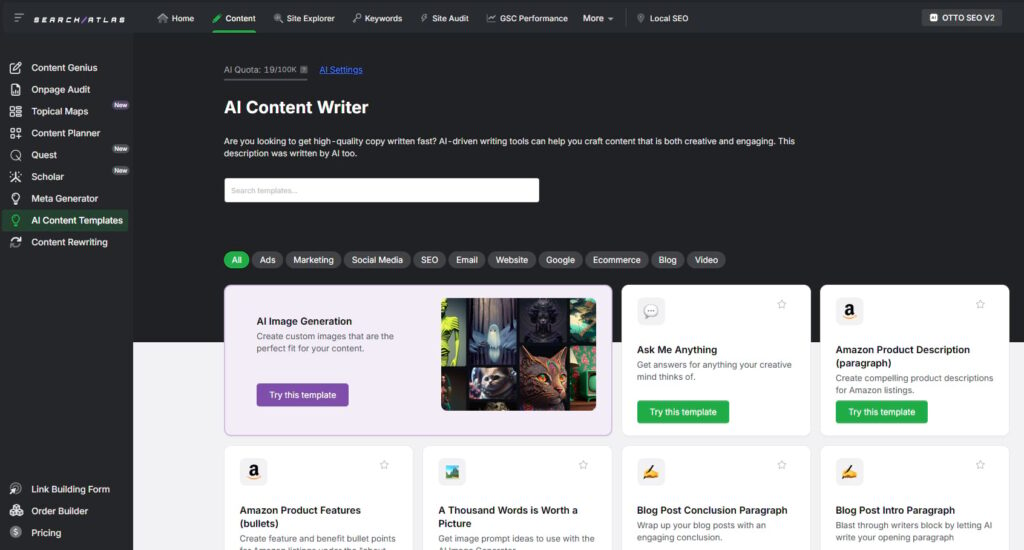
If your audience is active on multiple platforms, repurpose content to fit each one. A long-form article can become a LinkedIn post, a short video, or an email newsletter.
The key is to track what works, see where your audience engages most, and double down on those channels. When your content is in the right place, it doesn’t just get seen, it drives real results.
3. Analyze Competitors to Uncover Opportunities
If you’re in B2B, you’re not operating in a vacuum, your audience has options, and your competitors are fighting for the same attention.
The key to standing out? Understanding what your competitors are doing, where they’re succeeding, and where they’re falling short. Competitor research helps you spot opportunities to create better, more useful content that wins over your ideal customers.
Start by identifying your competitors. Look at the businesses your target audience follows, engages with, and trusts.
Then, take a deep dive into their content. What formats are they using? Blog posts, whitepapers, case studies, videos? What topics do they focus on? More importantly, what’s missing?
Analyze their strengths and weaknesses from a customer’s perspective. Are their case studies too surface-level? Are they failing to address key industry challenges? Do they publish content consistently, or are there gaps?
Use competitor analysis tools to receive insights on your competitors’ keywords, top pages, domain rating, backlinks, and much more.
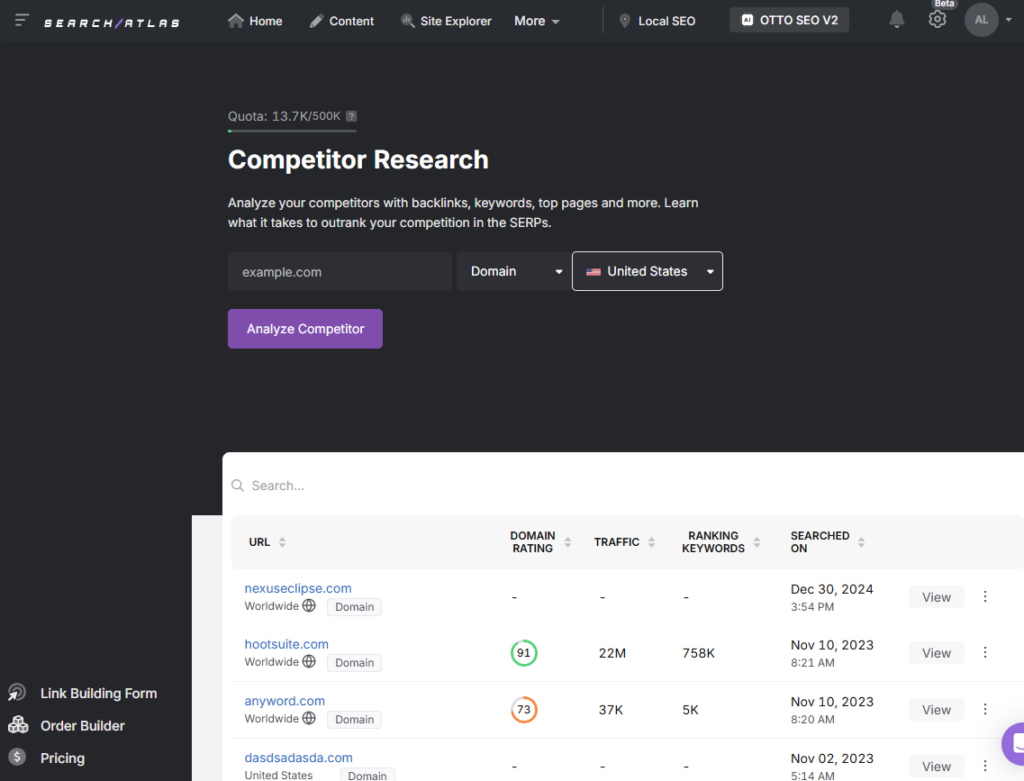
Once you have a clear picture, use this intel to craft content that sets you apart. Fill the gaps they’re leaving open, go deeper on critical topics, or present information in a more engaging way. If they rely on long, text-heavy articles, maybe you can create a high-value video series. If they overlook emerging trends, you can be the first to cover them.
Dig into their website, blog, email newsletters, and social media to get a full view of their strategy. The goal isn’t to copy—it’s to do it better. When you understand the competitive landscape, you can position yourself as the go-to resource in your industry.
4. Set Clear Goals to Track and Optimize Success
A strong B2B marketing strategy starts with clear, measurable goals. 🎯
Without them, it’s impossible to track progress or know if your efforts are working. While every business has unique targets, there are a few key metrics that help gauge success:
- Brand awareness: Are the right people recognizing and remembering your brand?
- Lead generation: How many potential customers are discovering your business?
- Conversion rate: How many leads are taking action, whether it’s signing up for a demo, booking a call, or making a purchase?
- Share of voice: How often does your content show up in search results compared to competitors?
Setting realistic goals starts with research. Industry benchmarks can give you a sense of what’s achievable, but your own data is even more valuable.
Look at past performance across your website, content, and campaigns to set a baseline. Talk to your team, whether it’s sales, product, or marketing, so your goals align with actual business needs.
And don’t be afraid to adjust. As you gather more data, refine your approach. Goals should guide your strategy, not lock you into a rigid plan that no longer makes sense. The key is to track, learn, and optimize as you go.
5. Brainstorm Powerful Topics That Resonate With the Audience
To create content that truly resonates, you need to understand what your audience cares about most. The best topics aren’t just interesting, they solve real problems, answer pressing questions, and provide real value.
Here are a few ways to generate strong content ideas:
- Ask your audience what challenges they’re facing and what kind of content would be most helpful.
- Explore industry forums and communities to see common questions and discussions.
- Conduct content research using a content planner to find high-value topics with solid search volume but lower competition, making it easier to rank.
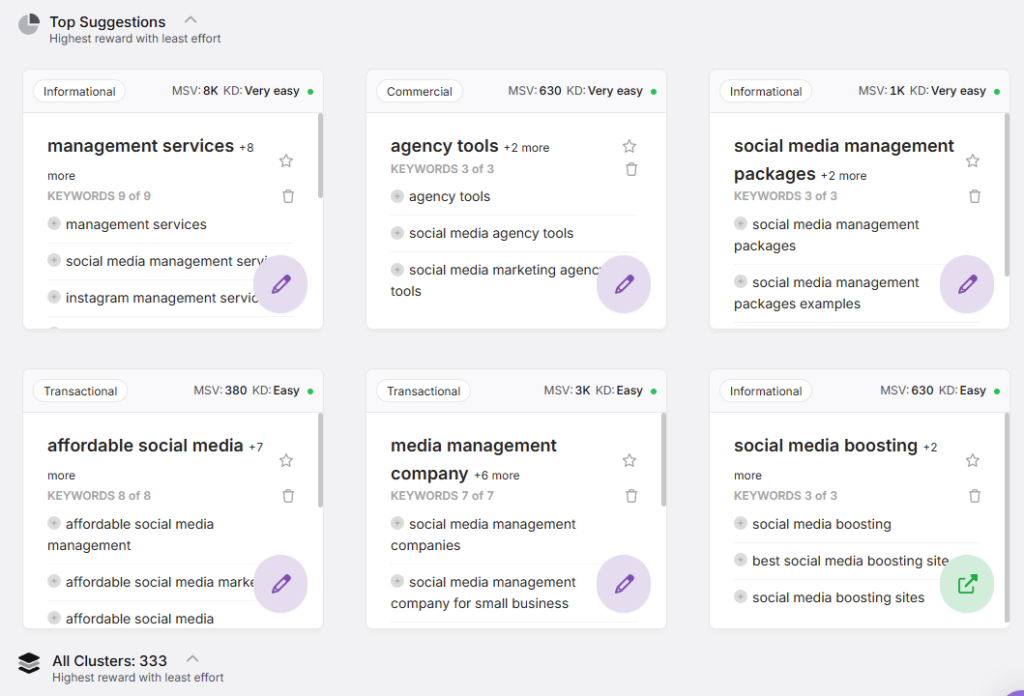
- Find your top-performing pages using a keyword rank tracker to identify what’s performing well, what needs improvement, and where there are gaps in the buyer’s journey.
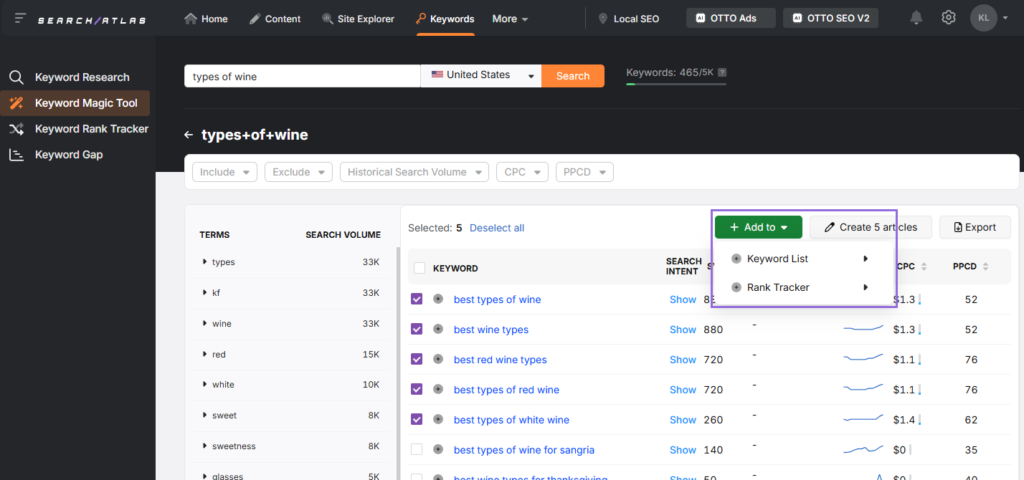
The goal isn’t just to create content—it’s to create the right content. When you align your topics with what your audience needs, you build trust and position your brand as an industry leader.
6. Streamline Your Content Workflow for Efficiency
Without an efficient process, even the best ideas won’t make it to your audience.
A well-structured workflow ensures that content moves smoothly from ideation to publication. For example, instead of juggling emails, documents, and spreadsheets, a centralized system lets you plan, assign tasks, review drafts, and publish everything in one place.
This kind of organization eliminates bottlenecks and keeps your team aligned.
Speed matters in B2B marketing. The faster you deliver valuable content, the quicker you can engage potential customers. Establishing a clear posting schedule helps maintain consistency. For example:
- 5 SEO blog posts per week to boost search rankings and drive organic traffic.
- 2 case studies per month to highlight customer success.
- 3 social media posts per week to engage your audience.
- 1 product demo video per quarter to showcase your offerings.
- 1 industry report per quarter to position your brand as a thought leader.
An efficient content workflow isn’t just about productivity—it’s about getting the right content in front of the right people at the right time.
7. Leverage Scholar to Achieve Top-tier Content Quality
Scholar is a powerful content optimization tool designed to help you create high-quality B2B content that aligns perfectly with Google’s ranking criteria. It provides a score from 0 to 100, highlighting where your content excels and where it can be improved. 💯
Here’s how Scholar evaluates your content:
- Content Clarity: Ensures your content is easy to read, concise, and free from unnecessary fluff.
- Factuality: Verifies the accuracy of the information, ensuring relevance to the user’s query and its alignment with current data.
- Human Effort: Measures the amount of human input in creating the content, ensuring it’s not purely automated and adds genuine value.
- Information Gain: Identifies missing or unique information that could enhance the existing content and improve your rankings.
- Content Freshness: Tracks how up-to-date your content is, signaling its relevance to search engines.
- User Intent Alignment: Ensures the content matches what the user is searching for and provides a satisfactory answer.
- Entities: Optimizes content with relevant topics from Google’s Knowledge Graph to improve topical authority.
- Contextual Flow: Checks the logical flow between headings and content, ensuring a smooth reading experience.
For example, imagine you’re a local donut shop creating a blog post about “Best Donuts in [Your City].”
Scholar points out that your content lacks specific local information like customer reviews or details about your donut-making process. It could suggest adding facts like your donut’s unique flavors or your shop’s history to fill in gaps.
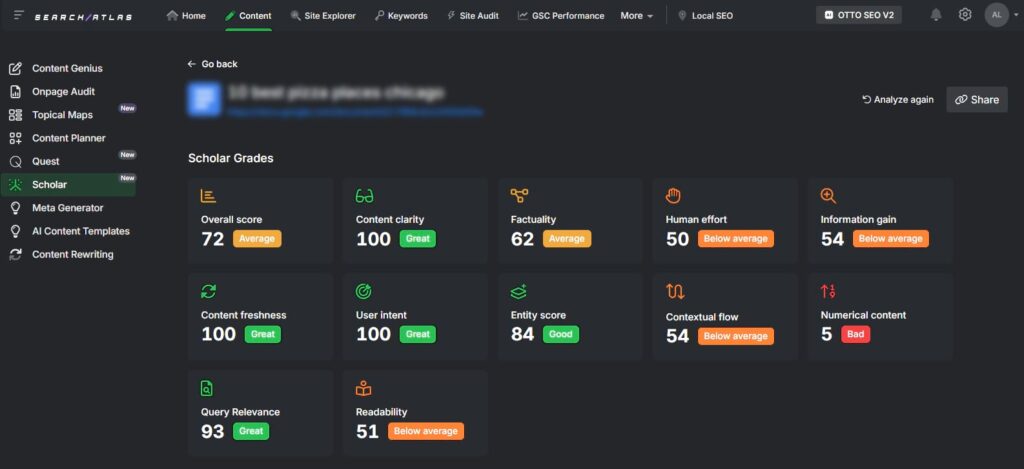
This helps not only enhance your content’s quality but also boosts your chances of ranking higher when people search for local donut spots.
Scholar continuously updates its algorithms to stay aligned with Google’s evolving SEO standards, helping you stay competitive in the ever-changing world of search engine optimization.
8. Track Leads and Micro-metrics for Smarter Decisions
The best B2B content marketers are all about the data. Without tracking metrics, it’s impossible to know what’s working and where to improve.
To make smarter decisions, focus on the following metrics like the current stats:
- Impressions and views for recent content
- Conversions like sign-ups, demo requests, or purchases from recent content
- Social media shares
- Benchmarks and trends:
The changes in read time from one period to the next:
- Bounce rate shifts
- Growth in email subscribers
And the top-performing content:
- Top 10 posts with the highest views
- Top 10 posts with the longest read times
- Top 10 posts with the highest conversions
Use an SEO tool that integrates with Google Search Console (GSC) and Google Analytics (GA4) to track all SEO user experience metrics on one screen.
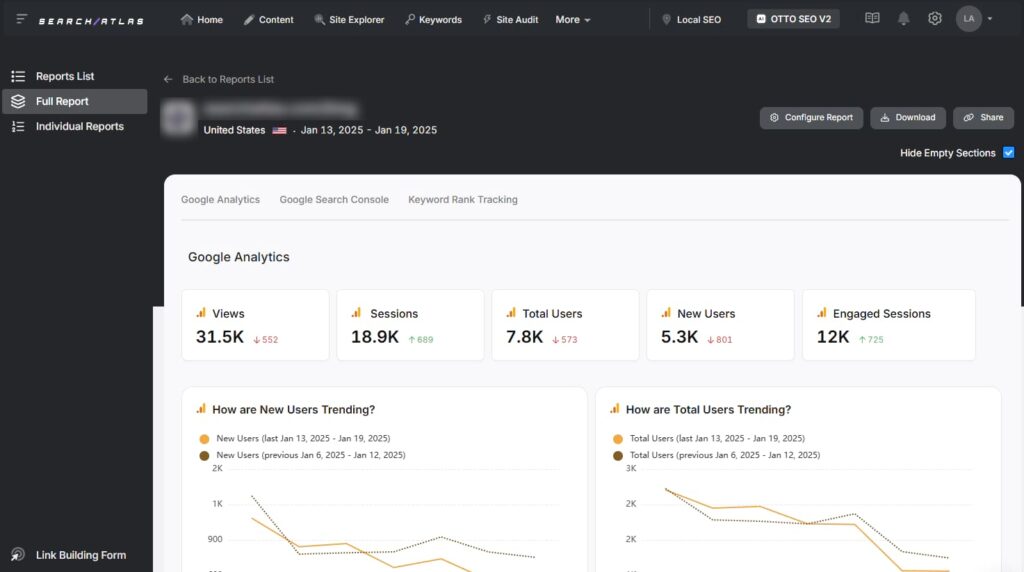
By analyzing these metrics, you can refine your strategy. For example, if a post is getting lots of views and shares, consider expanding it into a series. If another piece is driving great conversions, you could boost it with paid promotion.
Tracking these micro-metrics will give you the insights needed to continually improve and tailor your content for better results.
9. Create Personalized Nurture Journeys That Adapt to Behavior
Creating personalized nurture journeys that adapt to your leads’ behaviors is one of the smartest strategies for improving your B2B content marketing. The key is to deliver relevant content at the right time, based on what your leads are doing or showing interest in.
Here’s how you can set up nurture journeys that adapt to your leads’ behavior:
- Track page views: If a lead spends time on specific pages (like your product or service pages), send them targeted content about those offerings, case studies, white papers, or demo requests.
- Content downloads: If a lead downloads an eBook or guide, follow up with additional content related to that topic. For example, if they downloaded a guide on SEO, you might send them a blog post on advanced SEO strategies.
- Frequency of visits: For leads that are regularly visiting your site but haven’t yet converted, nurture them with educational content that pushes them toward a decision. Share testimonials, product comparisons, or exclusive offers to keep them engaged.
- On-site behavior: If a lead engages with a particular service or product category, customize pop-up chat messages offering helpful content or support for that specific interest.
- Email engagement: If a lead opens or clicks through emails you send, use that behavior to trigger more focused outreach. For example, after they click on a webinar invite, send them a reminder email or follow-up with related resources.
By understanding how your leads interact with your website and content, you can build nurturing journeys that feel personal, relevant, and helpful, leading to better engagement and higher conversion rates.
10. Create a Content Marketing Funnel to Drive Conversions
Creating a content marketing funnel is a powerful way to guide your leads through their journey, turning them from curious visitors into loyal customers. Understanding where your audience is in the process helps you deliver the right content at the right time.
The content marketing funnel is a simple model of the customer journey broken down into three stages:
- Top of the Funnel (ToFu): This is the awareness stage. People realize they have a problem but aren’t yet sure of the solution.
- Middle of the Funnel (MoFu): At this stage, your leads are actively seeking solutions and considering their options.
- Bottom of the Funnel (BoFu): Here, prospects are ready to make a decision and are evaluating specific solutions; this is where you push for conversions.
By creating content that speaks to these different stages, you guide your prospects along the path to conversion.
ToFu content raises awareness, like a blog on “5 Branding Mistakes Small Businesses Make” to attract entrepreneurs. MoFu content educates, such as a guide on “How to Choose the Right Marketing Strategy” to help prospects evaluate options. BoFu content drives conversions, like a case study with results and a “Request a Demo” CTA for ready-to-buy leads.
To make this funnel truly effective, it must align with the search intent behind your target keywords. Matching content to keyword intent ensures you’re reaching the right audience with the right message at the right time.
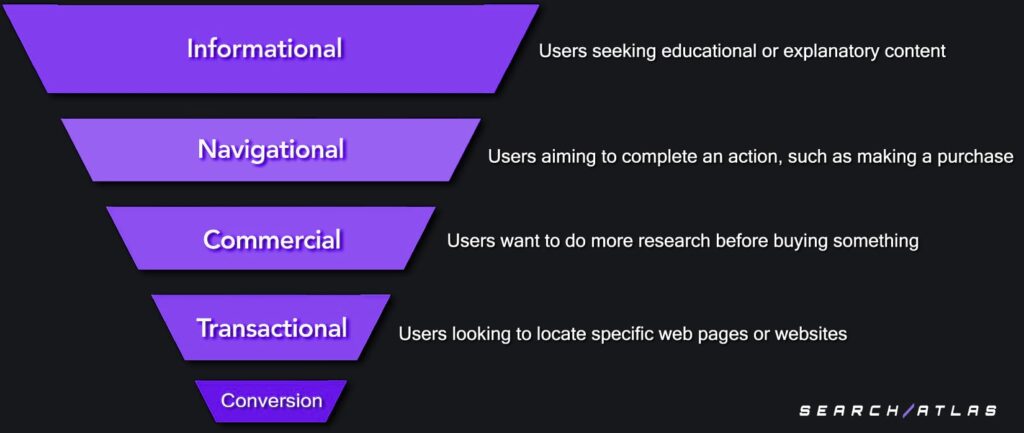
In this case, use a keyword research tool that shows you which is the keyword search intent for each one of your keywords or topics.
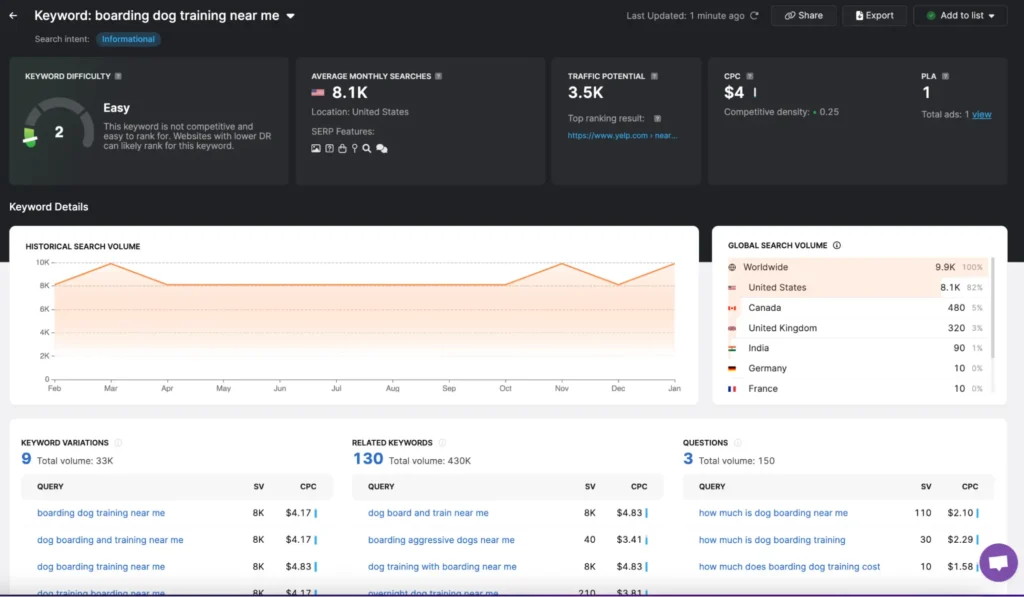
For Post-Purchase content, a subscription service could send a series of educational emails explaining advanced features and offering product updates to keep customers engaged and loyal.
11. Build Topical Authority to Strengthen Your Brand
Building topical authority in your niche helps establish your brand as a trusted resource and boosts your credibility. As a result, you’ll see not only improved brand awareness but also better search engine rankings.
The key to building topical authority is creating an SEO topical map and consistently publishing valuable, well-researched content on subjects related to your expertise. This could include guides, how-tos, and in-depth articles that truly benefit your audience.
Use a topical map tool to automatically create the ideal map for your business.
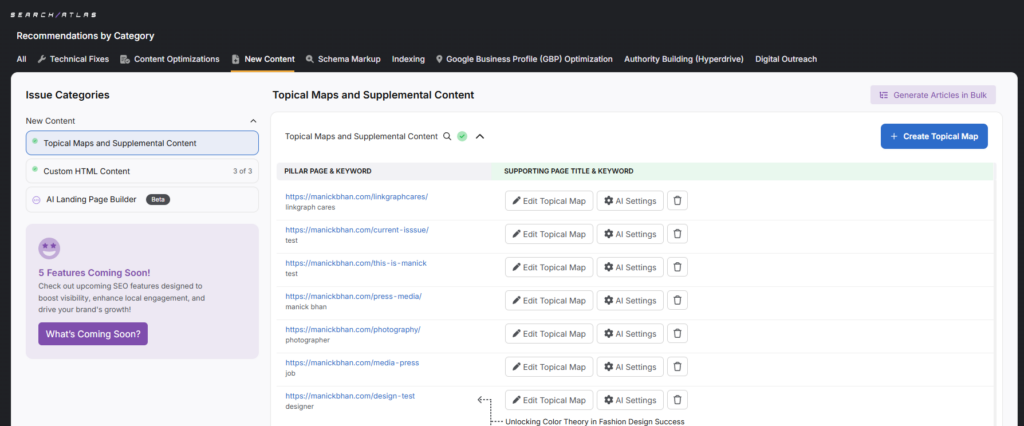
Some of your content might be thought leadership, where you share unique insights or perspectives to influence your audience and spark new ideas.
To generate strong content ideas, here are a few steps to follow:
- Stay updated on industry news and trends to keep your content relevant.
- Use keyword research to identify what your audience is searching for.
- Keep an eye on ongoing discussions on forums and social media.
- Engage with other experts in your field to exchange ideas.
For example, a B2B SaaS company specializing in project management tools might regularly publish in-depth content about best practices for managing remote teams or optimizing project workflows.
12. Monitor Your Results to Optimize Performance
To hit your B2B marketing goals, you need to track your results. Monitoring key metrics shows what’s working and where to adjust so you can focus on the most effective strategies.
For example, tracking brand awareness means checking which keywords bring visitors to your site—whether it’s your company name or industry-specific terms. Share of voice measures your visibility in search results. If you rank in positions 3 and 7 for “CRM software,” you hold 20% of the market visibility for that keyword.
Use a customizable and automated reporting tool to monitor all of your results in one dashboard. It’s even better if it contains AI Summary Overviews, which automatically summarize all of the most relevant points for you.
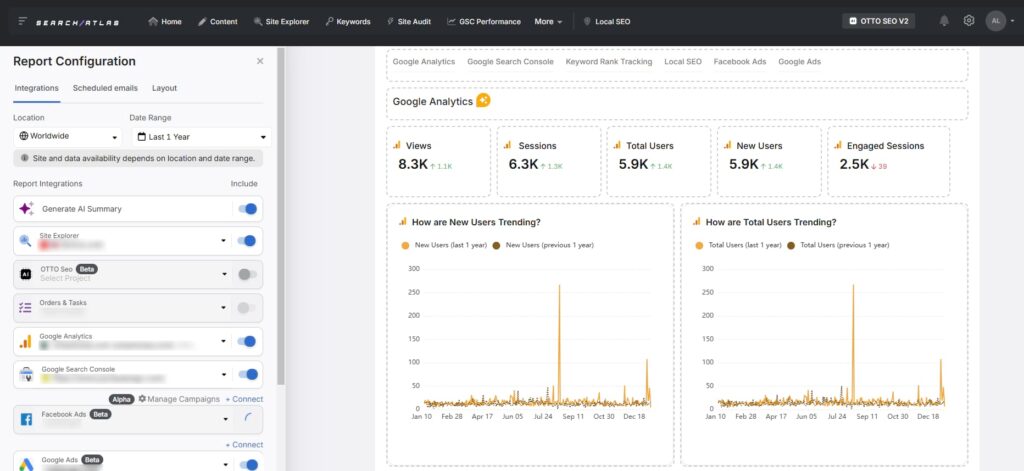
13. Use Social Proof to Showcase Authority and Outcomes
Social proof is key to building authority and attracting new B2B clients.
For example, you can collect testimonials and post them to highlight how your service helped clients achieve results, like increased efficiency or cost savings. Create case studies to provide detailed examples of your work, showcasing tangible outcomes.
Additionally, user-generated content like reviews or social media mentions offers authentic validation, while industry recognition boosts your reputation and trustworthiness.
Maximize B2B Content Strategy Without the Manual Work
Creating high-quality B2B content takes strategy, consistency, and attention to detail.
There are many key factors to consider, but you don’t have to do it all manually. AI-powered SEO tools can simplify the process and help you get better results faster. 🦾
With Search Atlas, you get access to powerful tools like Content Writer, Scholar, Content Templates, Competitor Analysis, and Automated Reporting, all designed to streamline your workflow.
Plus, OTTO takes automation to the next level, handling technical fixes, on-page optimization, link building, topical mapping, content creation, and more.
Start creating top-tier content and boosting conversions today with your free trial. No commitment, cancel anytime!


